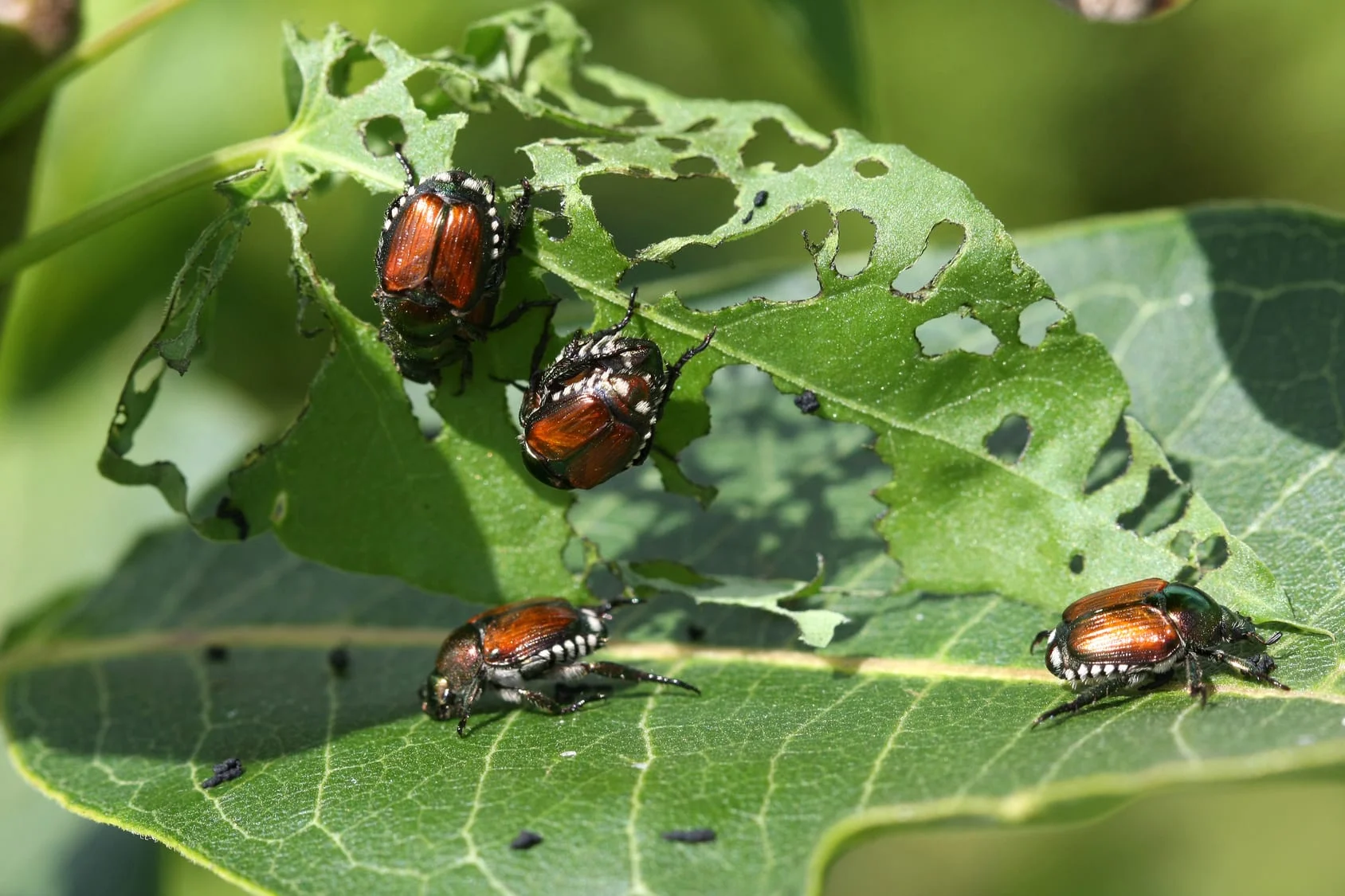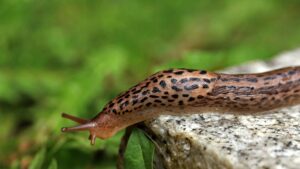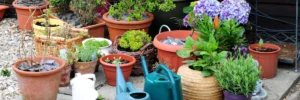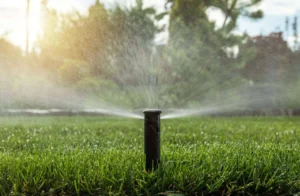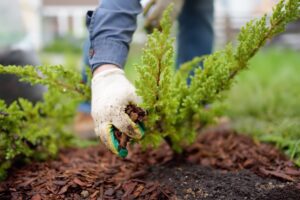Identifying and Managing Common Garden Pests: A Comprehensive Guide
As you nurture your garden through each season, you’re likely to encounter unwelcome visitors that threaten your carefully tended plants. From aphids munching on your roses to slugs devouring your lettuce, garden pests can quickly become a gardener’s worst nightmare. According to the University of California Statewide Integrated Pest Management Program, home gardeners in the US lose approximately 30-35% of their potential harvest to pests and diseases annually.
This comprehensive guide will help you identify common garden pests in the United States and provide effective, environmentally responsible strategies to manage them. By understanding the life cycles, behaviors, and vulnerabilities of these pests, you can protect your garden while minimizing the use of harsh chemicals.
Understanding Integrated Pest Management (IPM)
Before diving into specific pests, it’s important to understand the concept of Integrated Pest Management (IPM). The Environmental Protection Agency (EPA) defines IPM as “an effective and environmentally sensitive approach to pest management that relies on a combination of common-sense practices.” Learn more about IPM on the EPA website.
IPM emphasizes:
- Prevention as the first line of defense
- Identifying pests correctly before taking action
- Monitoring pest populations to determine when intervention is necessary
- Using the least toxic methods first
- Evaluating results to improve future pest management strategies
By adopting IPM principles in your garden, you’ll not only protect your plants more effectively but also preserve beneficial insects, reduce environmental impact, and save money on pest control products.
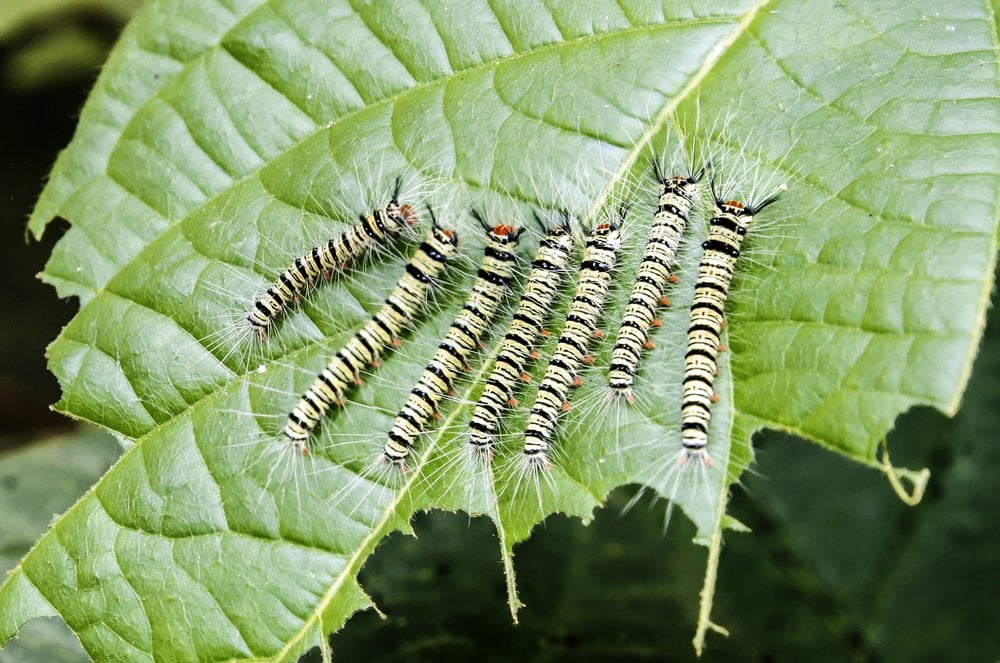
Common Garden Pests: Identification and Management
Insect Pests
Aphids
Identification: These small, soft-bodied insects (1/16 to 1/8 inch long) come in various colors including green, black, brown, red, and yellow. They cluster on new growth and the undersides of leaves, causing distortion and yellowing. A telltale sign of aphids is the sticky “honeydew” they excrete, which often leads to sooty mold growth.
Management:
- Spray plants with a strong stream of water to dislodge aphids
- Encourage natural predators like ladybugs, lacewings, and parasitic wasps
- For severe infestations, apply insecticidal soap or neem oil
- Plant aphid-repellent companions such as garlic, chives, and marigolds near vulnerable plants
Japanese Beetles
Identification: These distinctive pests (about 1/2 inch long) have metallic green bodies with copper-colored wing covers. They skeletonize leaves by feeding between leaf veins and target over 300 plant species, with particular fondness for roses, grapes, and linden trees.
Management:
- Hand-pick beetles in the morning when they’re sluggish and drop them into soapy water
- Use row covers during peak beetle season (typically June to August)
- Apply milky spore to lawns to control grub populations
- Consider traps, but place them away from prized plants as they can attract more beetles to the area
Tomato Hornworms
Identification: These large, green caterpillars (up to 4 inches long) have white diagonal stripes and a horn-like projection on their rear. They can rapidly defoliate tomato plants and also attack eggplants, peppers, and potatoes.
Management:
- Inspect plants regularly and hand-pick hornworms
- Look for hornworms with white cocoons on their backs – these carry beneficial parasitic wasp eggs and should be left alone
- Apply Bacillus thuringiensis (Bt), a biological control effective against caterpillars
- Till soil in fall and spring to destroy overwintering pupae
Squash Bugs
Identification: Adult squash bugs are flat, grayish-brown, and about 5/8 inch long. They lay copper-colored eggs in neat rows on the undersides of leaves. Both adults and nymphs suck plant sap, causing wilting and eventual death of leaves and stems.
Management:
- Crush egg masses found on leaf undersides
- Place boards near plants – squash bugs will gather underneath at night and can be collected and destroyed in the morning
- Use row covers until plants begin to flower
- Practice crop rotation and clean up garden debris in fall
Soil-Dwelling Pests
Grubs
Identification: White, C-shaped larvae with brown heads, grubs are the immature stage of various beetles, including Japanese beetles and June bugs. They feed on plant roots, causing patches of dead or dying turf and weakened ornamental plants.
Management:
- Maintain healthy soil with good drainage – grubs prefer moist conditions
- Apply beneficial nematodes or milky spore disease to soil
- Reduce irrigation during peak egg-laying periods (usually midsummer)
- For severe infestations, consider applying grub-specific insecticides in late summer when grubs are young and vulnerable
Root-Knot Nematodes
Identification: These microscopic roundworms attack plant roots, causing swellings or “knots.” Above-ground symptoms include stunted growth, wilting during hot weather despite adequate moisture, and yellowing leaves. Heavily infected plants often die prematurely.
Management:
- Plant resistant varieties when available
- Practice crop rotation with non-host plants like marigolds
- Solarize soil by covering moistened soil with clear plastic for 4-6 weeks during hot summer months
- Add organic matter to soil to encourage beneficial microorganisms
- The USDA Agricultural Research Service provides extensive information on nematode management strategies. Visit their website for more information.
Soft-Bodied Pests
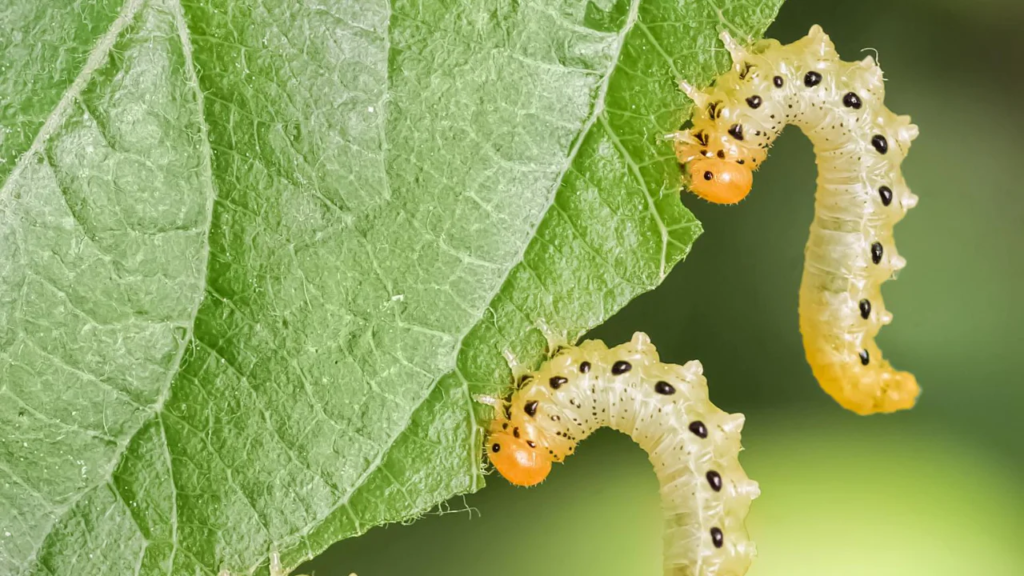
Slugs and Snails
Identification: These mollusks leave silvery slime trails and irregular holes in leaves, flowers, and fruits. They’re most active at night and during damp weather, hiding in dark, moist areas during the day.
Management:
- Set out traps such as shallow dishes of beer or boards raised slightly off the ground
- Create barriers with copper tape, diatomaceous earth, or crushed eggshells
- Water in the morning so soil surfaces are drier by evening
- Handpick in the evening using a flashlight
Cutworms
Identification: These caterpillars (larvae of several moth species) hide in soil during the day and emerge at night to feed. They typically cut young seedlings off at soil level or climb plants to feed on foliage, buds, and fruits.
Management:
- Place collar barriers around seedling stems, extending 1 inch below soil and 2 inches above
- Encourage natural predators like ground beetles and birds
- Till soil in late fall to expose overwintering larvae
- Apply Bt for severe infestations
Pest Identification Table
| Pest | Appearance | Targeted Plants | Damage Signs | Active Season |
|---|---|---|---|---|
| Aphids | Small (1/16-1/8″), soft-bodied, various colors | Most garden plants, especially new growth | Curled leaves, sticky honeydew, sooty mold | Spring through fall |
| Japanese Beetles | 1/2″ long, metallic green with copper wings | Roses, grapes, linden, maple, fruit trees | Skeletonized leaves | June to August |
| Tomato Hornworms | Large (3-4″), green caterpillars with white stripes | Tomatoes, peppers, eggplants, potatoes | Defoliation, damaged fruits | Mid-summer |
| Squash Bugs | 5/8″ long, flat, grayish-brown | Squash, pumpkins, cucumbers | Wilting, yellow spots on leaves | Summer to fall |
| Grubs | White, C-shaped larvae with brown heads | Lawn grass, plant roots | Brown patches in lawn, wilting plants | Spring to fall |
| Root-Knot Nematodes | Microscopic roundworms | Various vegetables, especially tomatoes | Galls on roots, stunted growth | Year-round |
| Slugs/Snails | Soft-bodied mollusks with or without shells | Leafy vegetables, hostas, strawberries | Irregular holes in leaves, silvery slime trails | Spring through fall |
| Cutworms | Gray to brown caterpillars, up to 2″ long | Young seedlings, various garden plants | Plants cut at soil level | Spring to summer |
Natural Pest Control Methods Comparison
| Control Method | Effectiveness | Environmental Impact | Cost | Ease of Implementation | Best For |
|---|---|---|---|---|---|
| Hand-picking | High for visible pests | None | Free | Moderate (time-consuming) | Larger pests like hornworms, beetles |
| Insecticidal Soap | Moderate to high | Low | $ | Easy | Soft-bodied insects (aphids, mites) |
| Neem Oil | Moderate | Low | $ | Easy | Multiple pest types, fungal diseases |
| Beneficial Insects | High (long-term) | Positive | $$ | Moderate | Sustainable gardens, long-term control |
| Row Covers | High | None | $$ | Easy | Preventing flying insect damage |
| Companion Planting | Moderate | Positive | $ | Moderate | Prevention, attracting beneficials |
| Diatomaceous Earth | Moderate | Low | $ | Easy | Crawling insects, slugs |
| Bacillus thuringiensis (Bt) | High for caterpillars | Very low | $ | Easy | Caterpillar pests only |
| Milky Spore | High for grubs | None | $$ | Easy | Japanese beetle grubs in lawns |
Seasonal Pest Management Strategy
Effective pest management requires a year-round approach tailored to the life cycles of common pests. Here’s a seasonal breakdown to help you stay ahead of potential problems:
Spring (March-May)
As your garden awakens, so do many pests. This is a critical time for prevention:
- Clean up winter debris to eliminate hiding places for overwintering pests
- Inspect plants regularly for early signs of pest activity, especially aphids and cutworms
- Install row covers over vulnerable seedlings and young plants
- Apply dormant oil to fruit trees before bud break to smother overwintering eggs
- Introduce beneficial insects like ladybugs and lacewings
The National Gardening Association notes that for every week you delay identifying an early spring infestation, the potential pest population can increase by 5-10 times.
Summer (June-August)
Peak growing season brings peak pest activity:
- Monitor plants twice weekly for signs of damage
- Water in the morning to reduce humidity that attracts pests
- Hand-pick pests like Japanese beetles and tomato hornworms
- Apply organic treatments during cooler evening hours for better effectiveness
- Maintain plant health through proper watering and fertilization to increase resistance
Fall (September-November)
Prepare your garden for winter while breaking pest cycles:
- Remove and dispose of pest-infested plants (do not compost)
- Clean up fallen fruit from beneath trees
- Apply beneficial nematodes to soil to control grubs and other soil-dwelling pests
- Plant cover crops to improve soil health and disrupt pest life cycles
- Till garden beds to expose overwintering pests to predators and cold temperatures
Winter (December-February)
Planning and preparation during the dormant season:
- Review pest issues from the previous year and plan accordingly
- Research resistant plant varieties to include in spring planting
- Clean and sanitize garden tools to prevent disease spread
- Order beneficial insects for early spring release
- Construct physical barriers like raised beds with copper edging to deter slugs
Creating a Pest-Resistant Garden
Prevention is always easier than treatment. Here are strategies to make your garden naturally resistant to pests:
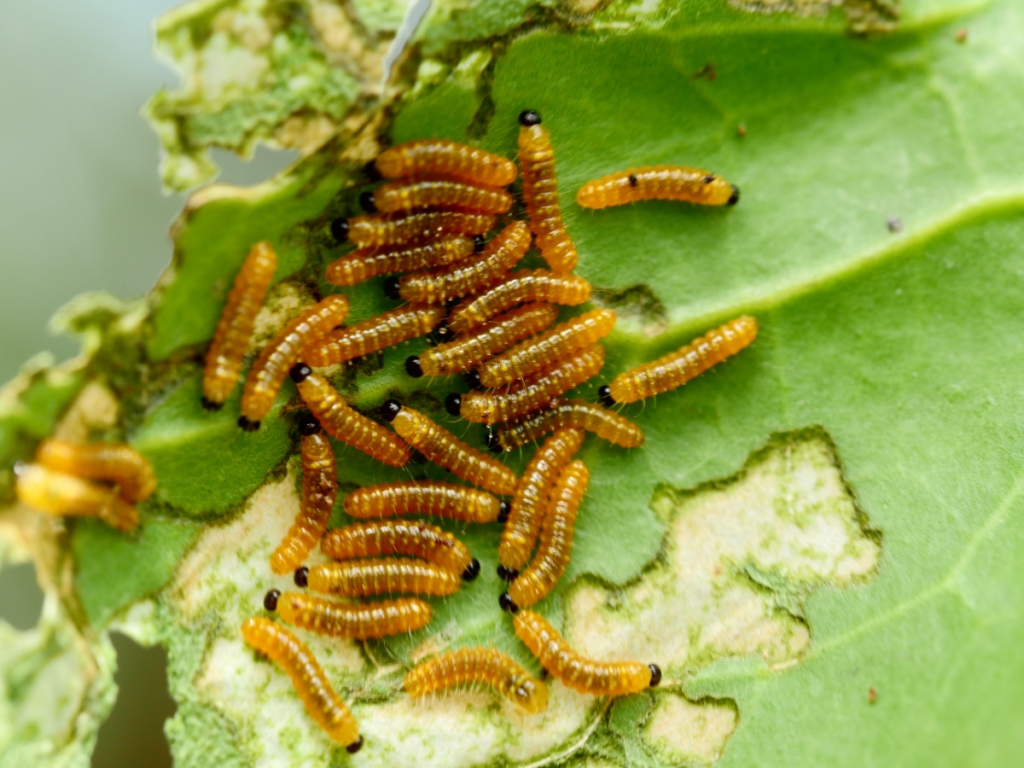
Healthy Soil = Healthy Plants
Plants grown in nutrient-rich soil have stronger natural defenses against pests and diseases. According to the USDA Natural Resources Conservation Service, every 1% increase in soil organic matter can increase a plant’s natural pest resistance by up to 10%. Learn more about soil health from the NRCS.
To improve your soil:
- Add compost regularly (2-3 inches annually)
- Use cover crops during off-seasons
- Avoid over-tilling, which disrupts beneficial soil organisms
- Test soil pH and nutrient levels every 2-3 years
Biodiversity: Your Secret Weapon
Diverse gardens have fewer pest problems than monocultures. Research from Penn State University shows that gardens with eight or more plant families have approximately 50% fewer pest issues than gardens dominated by just 2-3 plant families.
To increase biodiversity:
- Interplant vegetables with herbs and flowers
- Choose native plants that support local beneficial insects
- Include plants that flower at different times throughout the growing season
- Incorporate various plant heights and structures
Water Management
How you water can significantly impact pest populations:
- Use drip irrigation rather than overhead sprinklers to keep foliage dry
- Water in the morning so plants dry by evening
- Avoid overwatering, which creates hospitable conditions for many pests
- Apply mulch to maintain consistent soil moisture and reduce splashing
When to Seek Professional Help
While most garden pest issues can be managed with DIY methods, some situations warrant professional intervention:
- Identification of unusual or potentially invasive species
- Severe infestations that have resisted multiple treatment attempts
- Pest problems affecting valuable landscape plants or large areas
- Suspected soil-borne diseases requiring laboratory testing
Before hiring a pest control service, verify they offer IPM-based approaches and are familiar with organic options for edible gardens.
Conclusion: Finding Balance in Your Garden Ecosystem
Remember that the goal of pest management isn’t to eliminate all insects—many are beneficial or harmless. A healthy garden ecosystem includes some insect activity, and occasional minor damage is normal. By implementing the strategies outlined in this guide, you’ll be well-equipped to identify problems early, intervene appropriately, and maintain a beautiful, productive garden with minimal chemical use.
As renowned entomologist and IPM pioneer Dr. Perry Adkisson noted, “The best garden defense is a healthy ecosystem that keeps pest populations naturally in check.” By working with nature rather than against it, you’ll create a resilient garden that can withstand pest pressure while providing a haven for beneficial insects, birds, and other wildlife that help maintain this delicate balance.
With patience, observation, and the right management techniques, you can enjoy the fruits (and vegetables!) of your labor without surrendering to unwelcome garden visitors.
